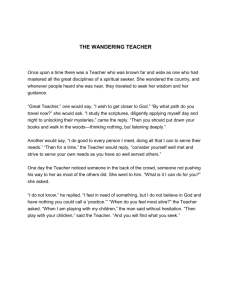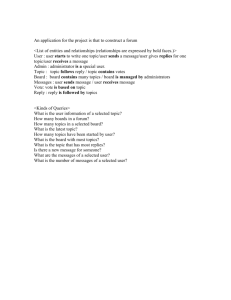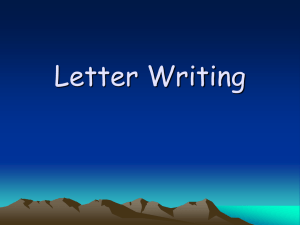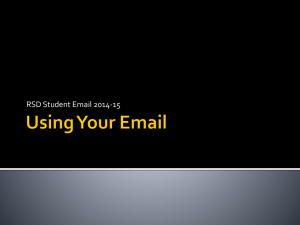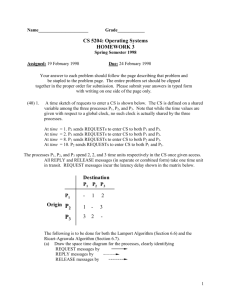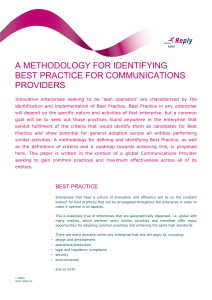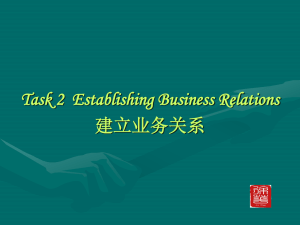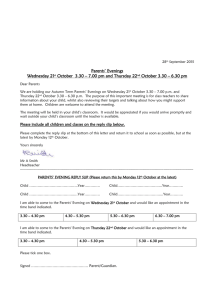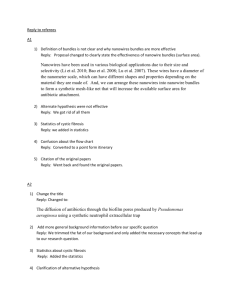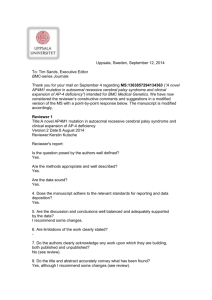1. Understand the format
advertisement
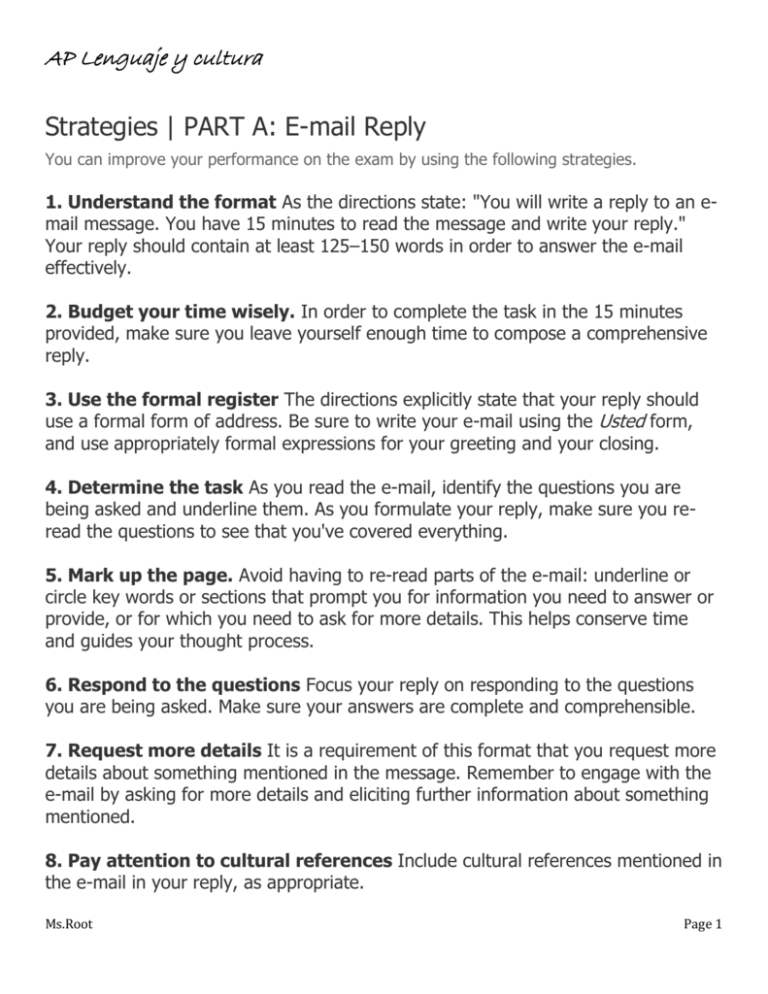
AP Lenguaje y cultura Strategies | PART A: E-mail Reply You can improve your performance on the exam by using the following strategies. 1. Understand the format As the directions state: "You will write a reply to an email message. You have 15 minutes to read the message and write your reply." Your reply should contain at least 125–150 words in order to answer the e-mail effectively. 2. Budget your time wisely. In order to complete the task in the 15 minutes provided, make sure you leave yourself enough time to compose a comprehensive reply. 3. Use the formal register The directions explicitly state that your reply should use a formal form of address. Be sure to write your e-mail using the Usted form, and use appropriately formal expressions for your greeting and your closing. 4. Determine the task As you read the e-mail, identify the questions you are being asked and underline them. As you formulate your reply, make sure you reread the questions to see that you've covered everything. 5. Mark up the page. Avoid having to re-read parts of the e-mail: underline or circle key words or sections that prompt you for information you need to answer or provide, or for which you need to ask for more details. This helps conserve time and guides your thought process. 6. Respond to the questions Focus your reply on responding to the questions you are being asked. Make sure your answers are complete and comprehensible. 7. Request more details It is a requirement of this format that you request more details about something mentioned in the message. Remember to engage with the e-mail by asking for more details and eliciting further information about something mentioned. 8. Pay attention to cultural references Include cultural references mentioned in the e-mail in your reply, as appropriate. Ms.Root Page 1 AP Lenguaje y cultura 9. Vary your vocabulary Try not to repeat words or expressions; look for appropriate synonyms and alternate ways of saying things to prove you have a broad vocabulary. Avoid overly-used words. 10. Use complex language Raise your level of communication by using a variety of structures. Include compound sentences and complex structures rather than sticking to basic language. 11. Watch your verb tenses Be consistent in your use of verb tenses. You will want to show a range of verb tenses if appropriate, but be careful to maintain consistency. If you are writing in the present tense, stay in the present tense. Alternating between past and present tenses can make your writing confusing. 12. Use what you know Incorporate what you know —historical and/or cultural information— if it applies in order to demonstrate your knowledge. 13. Be accurate Check your writing for grammar, punctuation, spelling, and accentuation errors. You will be graded on both your ideas and the quality of your expression. 14. Make sure your message is complete Be sure to include all the elements requested in the directions: "Your reply should include a greeting and a closing and should respond to all the questions and requests in the message. In your reply, you should also ask for more details about something mentioned in the message." 15. Check your work Once you finish writing, re-read your response to make sure you have answered all the questions and asked for further information. Pay attention to the following: Eliminate repetition. Be concise. Eliminate weak verbs. Is your reasoning logical? Does your writing flow well? Have you used appropriate transitions? Is your e-mail clear and cohesive? 16. Memorize the direction lines! Ms.Root Page 2 AP Lenguaje y cultura Ms.Root Page 3
